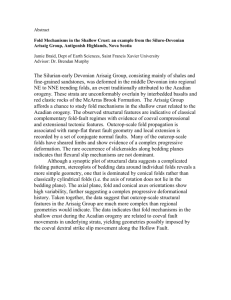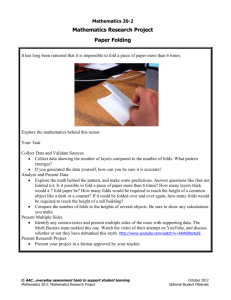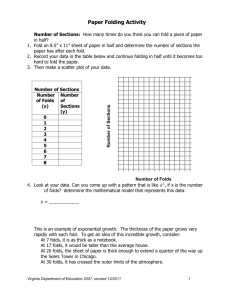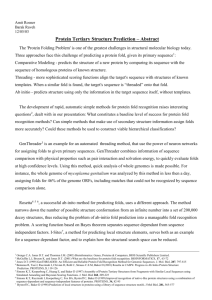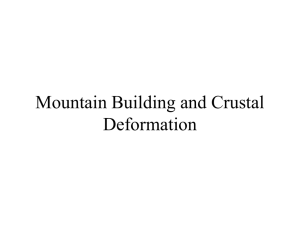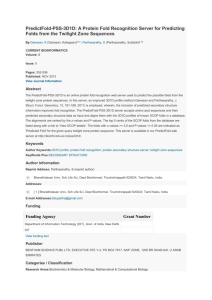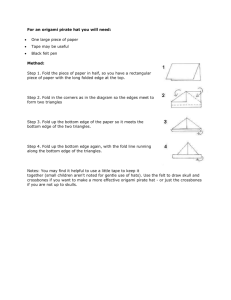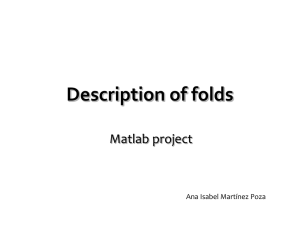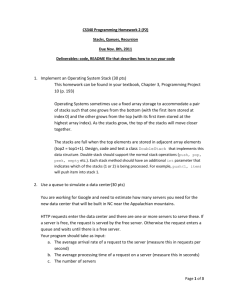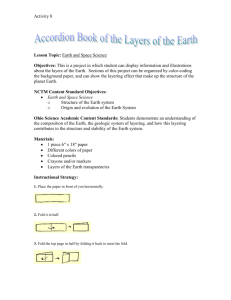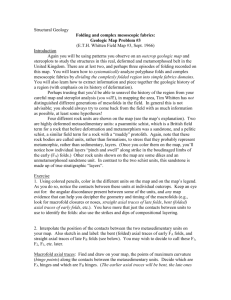Fold analysis techniques
advertisement
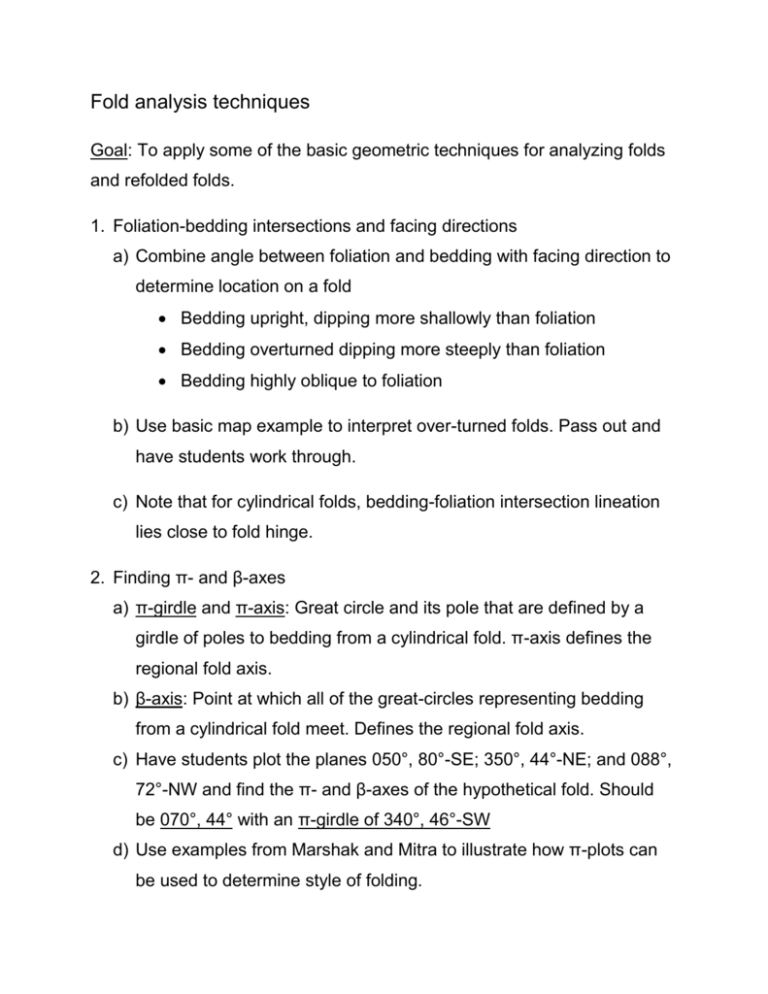
Fold analysis techniques Goal: To apply some of the basic geometric techniques for analyzing folds and refolded folds. 1. Foliation-bedding intersections and facing directions a) Combine angle between foliation and bedding with facing direction to determine location on a fold Bedding upright, dipping more shallowly than foliation Bedding overturned dipping more steeply than foliation Bedding highly oblique to foliation b) Use basic map example to interpret over-turned folds. Pass out and have students work through. c) Note that for cylindrical folds, bedding-foliation intersection lineation lies close to fold hinge. 2. Finding π- and β-axes a) π-girdle and π-axis: Great circle and its pole that are defined by a girdle of poles to bedding from a cylindrical fold. π-axis defines the regional fold axis. b) β-axis: Point at which all of the great-circles representing bedding from a cylindrical fold meet. Defines the regional fold axis. c) Have students plot the planes 050°, 80°-SE; 350°, 44°-NE; and 088°, 72°-NW and find the π- and β-axes of the hypothetical fold. Should be 070°, 44° with an π-girdle of 340°, 46°-SW d) Use examples from Marshak and Mitra to illustrate how π-plots can be used to determine style of folding. 3. Refolded folds a) Recognizing refolded folds Can sometimes be seen in outcrop — hook folds Can be recognized using regional patterns in facing direction — example from Waterville area Can also produce interference patterns b) Fold interference patterns Type-0, tightening of pervious folds: Fold axes and axial surfaces subparallel. Previous folds are tightened or flattened. Type-I, dome and basin: Trend of fold axes and strike of axial surfaces are at near-right angles to one another. Dips of axial surfaces remain the same Type-II, boomerang: Trend of fold axes and strike of axial surfaces are at near-right angles to one another. Dips of axial surfaces also at high-angle to one another Type-III, hook folds: Fold axes are subparallel. Strikes of axial surfaces are at near-right angles to one another. Dips of axial surfaces are similar. c) Fold interference patterns in-class interpretation — Use Hatcher’s maps as in-class exercise.
